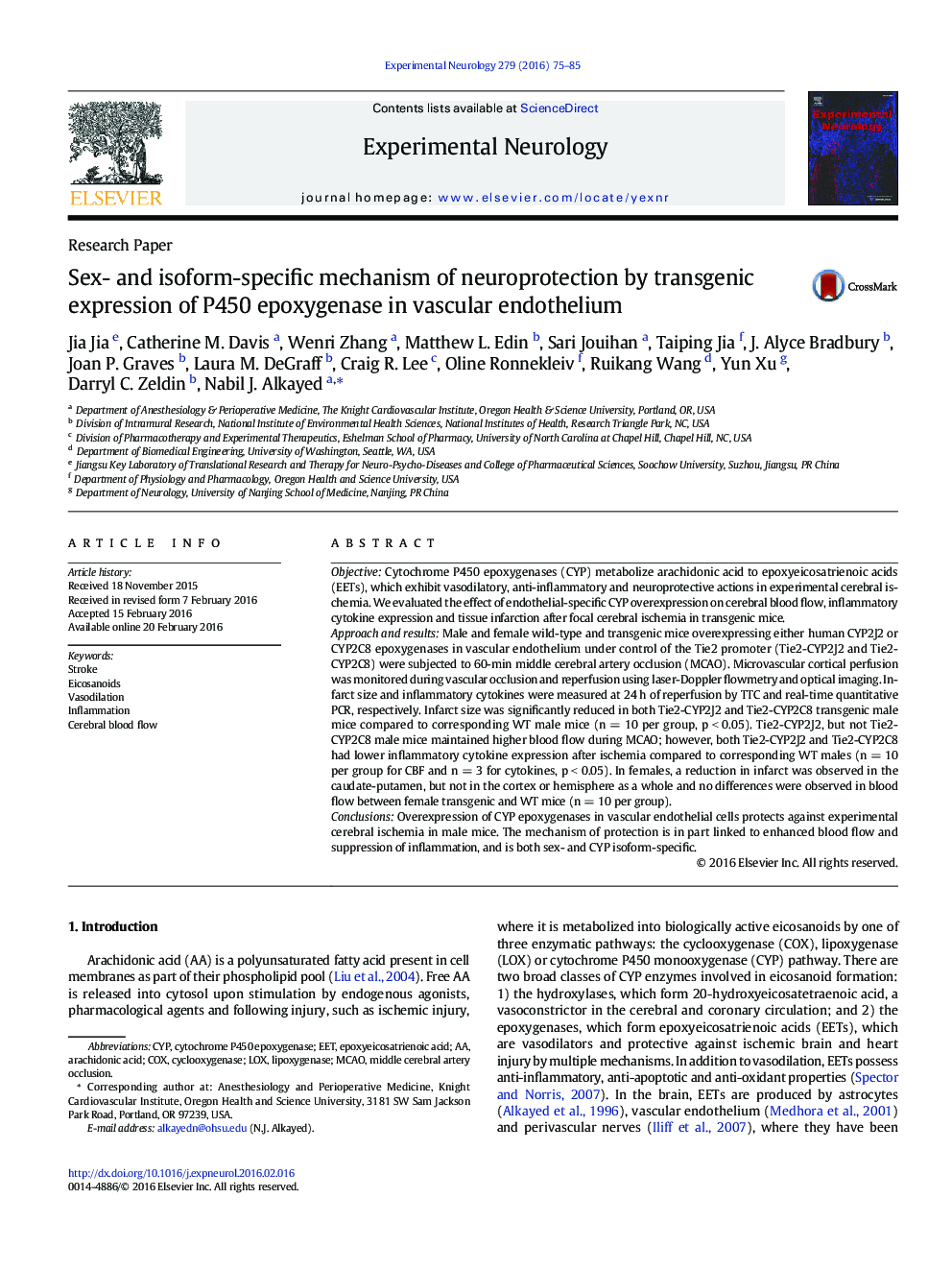| Article ID | Journal | Published Year | Pages | File Type |
|---|---|---|---|---|
| 6017026 | Experimental Neurology | 2016 | 11 Pages |
â¢Transgenic endothelial CYP2J2/CYP2C8 expression reduces MCAO infarct in male mice, and to a lesser extent in female mice.â¢Endothelial CYP2J2, but not CYP2C8, increases collateral blood flow in male mice.â¢Endothelial CYP2J2/CYP2C8 reduces post-ischemic inflammatory response in male mice.â¢Endothelial CYP epoxygenase is a potential therapeutic target in male stroke patients.
ObjectiveCytochrome P450 epoxygenases (CYP) metabolize arachidonic acid to epoxyeicosatrienoic acids (EETs), which exhibit vasodilatory, anti-inflammatory and neuroprotective actions in experimental cerebral ischemia. We evaluated the effect of endothelial-specific CYP overexpression on cerebral blood flow, inflammatory cytokine expression and tissue infarction after focal cerebral ischemia in transgenic mice.Approach and resultsMale and female wild-type and transgenic mice overexpressing either human CYP2J2 or CYP2C8 epoxygenases in vascular endothelium under control of the Tie2 promoter (Tie2-CYP2J2 and Tie2-CYP2C8) were subjected to 60-min middle cerebral artery occlusion (MCAO). Microvascular cortical perfusion was monitored during vascular occlusion and reperfusion using laser-Doppler flowmetry and optical imaging. Infarct size and inflammatory cytokines were measured at 24 h of reperfusion by TTC and real-time quantitative PCR, respectively. Infarct size was significantly reduced in both Tie2-CYP2J2 and Tie2-CYP2C8 transgenic male mice compared to corresponding WT male mice (n = 10 per group, p < 0.05). Tie2-CYP2J2, but not Tie2-CYP2C8 male mice maintained higher blood flow during MCAO; however, both Tie2-CYP2J2 and Tie2-CYP2C8 had lower inflammatory cytokine expression after ischemia compared to corresponding WT males (n = 10 per group for CBF and n = 3 for cytokines, p < 0.05). In females, a reduction in infarct was observed in the caudate-putamen, but not in the cortex or hemisphere as a whole and no differences were observed in blood flow between female transgenic and WT mice (n = 10 per group).ConclusionsOverexpression of CYP epoxygenases in vascular endothelial cells protects against experimental cerebral ischemia in male mice. The mechanism of protection is in part linked to enhanced blood flow and suppression of inflammation, and is both sex- and CYP isoform-specific.
